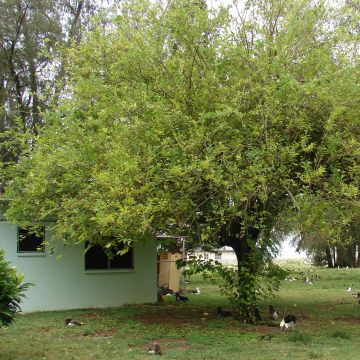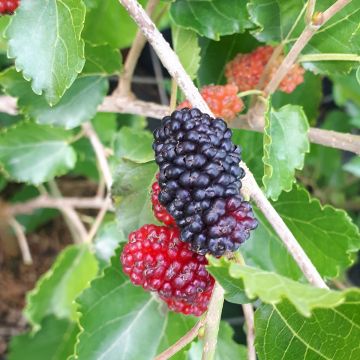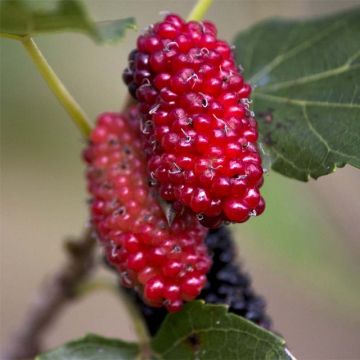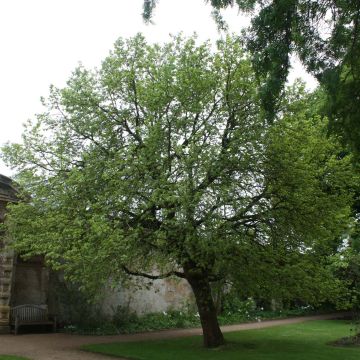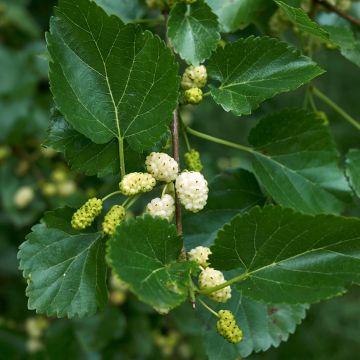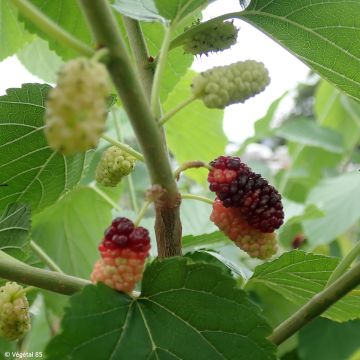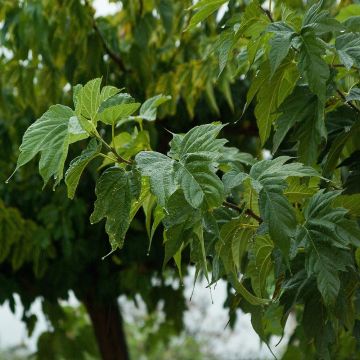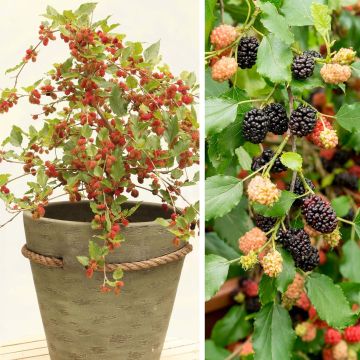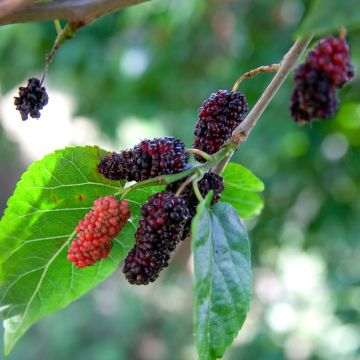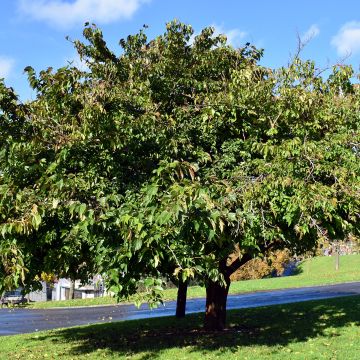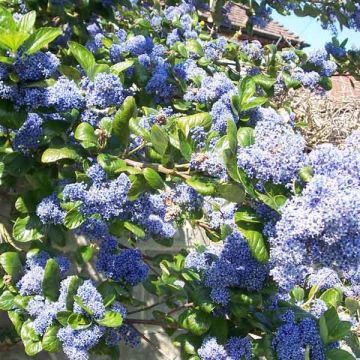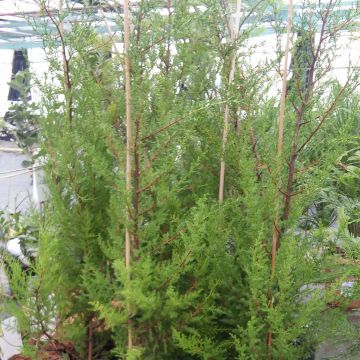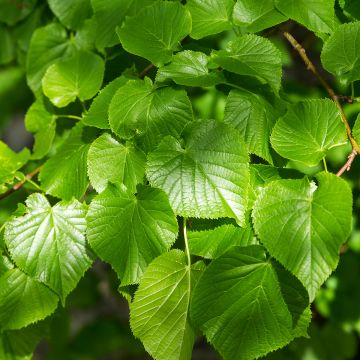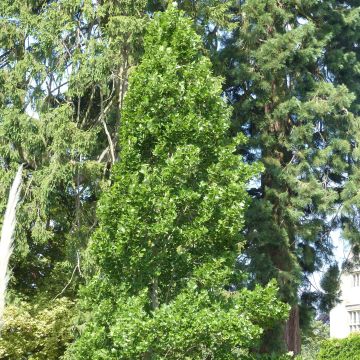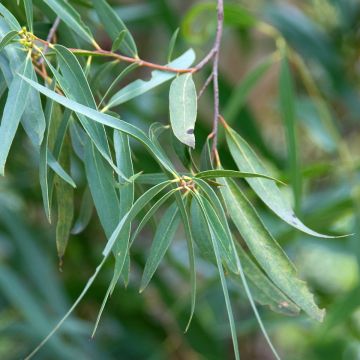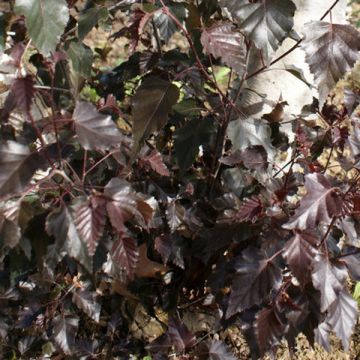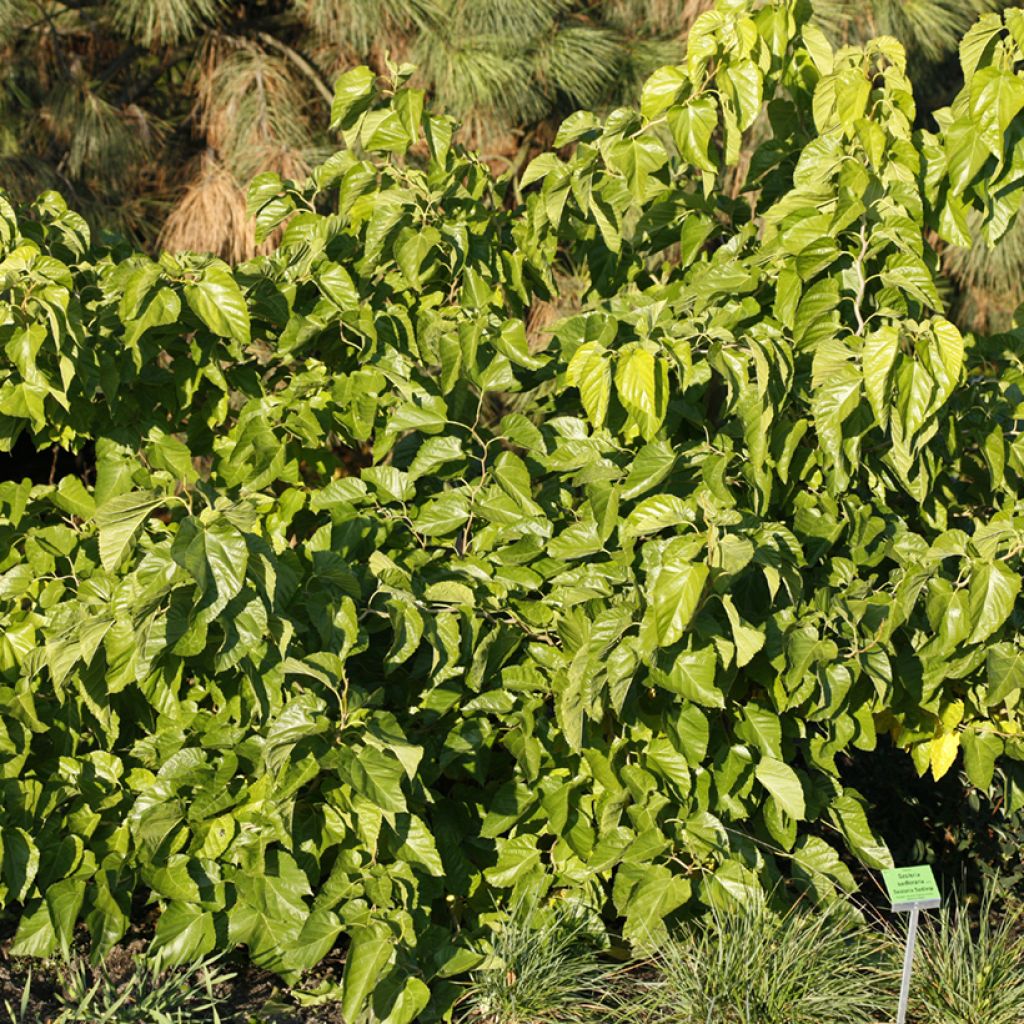

Morus latifolia Spirata
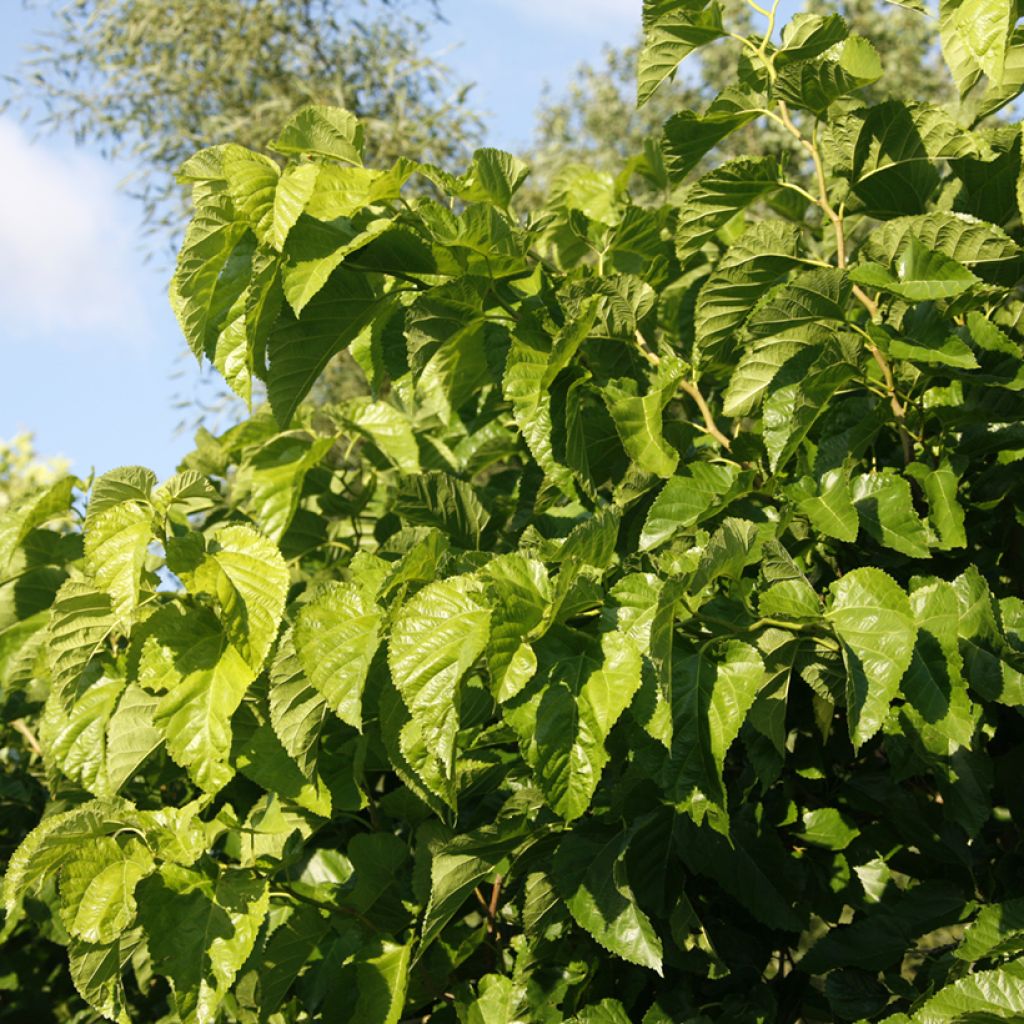

Morus latifolia Spirata
Morus latifolia Spirata
Morus alba var. latifolia Spirata
This item cannot be shipped to the selected country
Delivery charge from €5.90
Delivery to Corse prohibited
More information
Schedule delivery date,
and select date in basket
This plant carries a 24 months recovery warranty
More information
We guarantee the quality of our plants for a full growing cycle, and will replace at our expense any plant that fails to recover under normal climatic and planting conditions.
From €5.90 for pickup delivery and €6.90 for home delivery
Express home delivery from €8.90.
Delivery to Corse prohibited: UE law prohibits the import of this plant from mainland France to Corse as part of the fight against Xylella fastidiosa. Please accept our sincere apologies.
More information
Does this plant fit my garden?
Set up your Plantfit profile →
Description
Morus latifolia 'Spirata' is a cultivar of the white mulberry with large leaves that stands out for its curious zigzag branches and very large leaves. It is a deciduous tree of intermediate size that will charm with its exotic appearance, unusual winter silhouette, and ease of cultivation. It can be planted as a specimen tree on a lawn or in the centre of a perennial bed.
The common Chinese mulberry, Morus alba, belongs to the Moraceae family. This tree produces latex in its tissues, like all members of its family. Native to Mongolia and India. This mulberry is monoecious, meaning it produces both female and male flowers, which are found in different locations on the same plant. It has given rise to several ornamental cultivars, some of which may be sterile. Morus alba var. latifolia is a subspecies recognizable by its large, unlobed leaves. The 'Spirata' variety, which is sterile, is native to Kyushu Island in Japan. Known before 1978, it was introduced to Boskoop in 1979 by the Dutchman HJ van de Laar.
Morus latifolia 'Spirata' develops a short and thick trunk, topped by a spreading and rounded to semi-open crown, slightly irregular. Its growth is rapid in the early years, then slows down. It can reach 8 to 9 m in all directions. Its light grey bark cracks to become thicker, then turns grey-brown. 'Spirata' develops strongly curved and twisted as well as zigzag yellow-brown branches. The deciduous leaves measure 15 to 22 cm. They are broadly ovate and heart-shaped, neither lobed nor notched, and their pointed tip is hairy on both sides. This shiny green foliage turns yellow before falling in autumn. This 'Spirata' cultivar only produces female flowers. So far, no fruits have been observed in cultivation. Its discreet flowering consists of catkins of tiny green-yellow flowers. The mulberry's root system, both taproot and running, does not transplant well. Its vigour means that it should be planted at a respectable distance from buildings.
Morus 'Spirata', once mature, is very hardy. It grows in fertile, well-worked, and well-drained soil, in a warm and sunny location. This tree tolerates pollution well, but it dislikes coastal areas and salt spray. Usually used as a specimen tree, it can also be found planted in rows along certain Japanese streets. In a medium-sized plot, it can be planted in the middle of the lawn. It can be enhanced by planting ground cover perennials or Liriopes at its base, which will spread as persistent carpets.
Report an error about the product description
Plant habit
Flowering
Foliage
Botanical data
Morus
alba var. latifolia
Spirata
Moraceae
Morus alba var. latifolia Spirata
Cultivar or hybrid
Other Morus - Mulberry
Planting and care
Morus latifolia 'Spirata' should be planted in spring or autumn in well-drained, rather fertile and deep soil, not too chalky or too acidic, and in full sun. Be careful not to damage its fleshy and brittle roots during planting. Once well established, it withstands cold weather and tolerates hot and dry summers. Young plants may be more sensitive to severe cold, especially in climates where winter is long, cold, and very humid. Prune to maintain a beautiful shape. It may be prone to rust, hemp, or powdery mildew, in which case treat with copper.
Planting period
Intended location
Care
This item has not been reviewed yet - be the first to leave a review about it.
Trees and large shrubs
Haven't found what you were looking for?
Hardiness is the lowest winter temperature a plant can endure without suffering serious damage or even dying. However, hardiness is affected by location (a sheltered area, such as a patio), protection (winter cover) and soil type (hardiness is improved by well-drained soil).

Photo Sharing Terms & Conditions
In order to encourage gardeners to interact and share their experiences, Promesse de fleurs offers various media enabling content to be uploaded onto its Site - in particular via the ‘Photo sharing’ module.
The User agrees to refrain from:
- Posting any content that is illegal, prejudicial, insulting, racist, inciteful to hatred, revisionist, contrary to public decency, that infringes on privacy or on the privacy rights of third parties, in particular the publicity rights of persons and goods, intellectual property rights, or the right to privacy.
- Submitting content on behalf of a third party;
- Impersonate the identity of a third party and/or publish any personal information about a third party;
In general, the User undertakes to refrain from any unethical behaviour.
All Content (in particular text, comments, files, images, photos, videos, creative works, etc.), which may be subject to property or intellectual property rights, image or other private rights, shall remain the property of the User, subject to the limited rights granted by the terms of the licence granted by Promesse de fleurs as stated below. Users are at liberty to publish or not to publish such Content on the Site, notably via the ‘Photo Sharing’ facility, and accept that this Content shall be made public and freely accessible, notably on the Internet.
Users further acknowledge, undertake to have ,and guarantee that they hold all necessary rights and permissions to publish such material on the Site, in particular with regard to the legislation in force pertaining to any privacy, property, intellectual property, image, or contractual rights, or rights of any other nature. By publishing such Content on the Site, Users acknowledge accepting full liability as publishers of the Content within the meaning of the law, and grant Promesse de fleurs, free of charge, an inclusive, worldwide licence for the said Content for the entire duration of its publication, including all reproduction, representation, up/downloading, displaying, performing, transmission, and storage rights.
Users also grant permission for their name to be linked to the Content and accept that this link may not always be made available.
By engaging in posting material, Users consent to their Content becoming automatically accessible on the Internet, in particular on other sites and/or blogs and/or web pages of the Promesse de fleurs site, including in particular social pages and the Promesse de fleurs catalogue.
Users may secure the removal of entrusted content free of charge by issuing a simple request via our contact form.
The flowering period indicated on our website applies to countries and regions located in USDA zone 8 (France, the United Kingdom, Ireland, the Netherlands, etc.)
It will vary according to where you live:
- In zones 9 to 10 (Italy, Spain, Greece, etc.), flowering will occur about 2 to 4 weeks earlier.
- In zones 6 to 7 (Germany, Poland, Slovenia, and lower mountainous regions), flowering will be delayed by 2 to 3 weeks.
- In zone 5 (Central Europe, Scandinavia), blooming will be delayed by 3 to 5 weeks.
In temperate climates, pruning of spring-flowering shrubs (forsythia, spireas, etc.) should be done just after flowering.
Pruning of summer-flowering shrubs (Indian Lilac, Perovskia, etc.) can be done in winter or spring.
In cold regions as well as with frost-sensitive plants, avoid pruning too early when severe frosts may still occur.
The planting period indicated on our website applies to countries and regions located in USDA zone 8 (France, United Kingdom, Ireland, Netherlands).
It will vary according to where you live:
- In Mediterranean zones (Marseille, Madrid, Milan, etc.), autumn and winter are the best planting periods.
- In continental zones (Strasbourg, Munich, Vienna, etc.), delay planting by 2 to 3 weeks in spring and bring it forward by 2 to 4 weeks in autumn.
- In mountainous regions (the Alps, Pyrenees, Carpathians, etc.), it is best to plant in late spring (May-June) or late summer (August-September).
The harvesting period indicated on our website applies to countries and regions in USDA zone 8 (France, England, Ireland, the Netherlands).
In colder areas (Scandinavia, Poland, Austria...) fruit and vegetable harvests are likely to be delayed by 3-4 weeks.
In warmer areas (Italy, Spain, Greece, etc.), harvesting will probably take place earlier, depending on weather conditions.
The sowing periods indicated on our website apply to countries and regions within USDA Zone 8 (France, UK, Ireland, Netherlands).
In colder areas (Scandinavia, Poland, Austria...), delay any outdoor sowing by 3-4 weeks, or sow under glass.
In warmer climes (Italy, Spain, Greece, etc.), bring outdoor sowing forward by a few weeks.

































